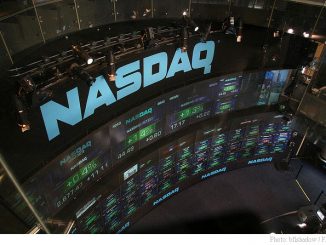- Microsoft’s Majorana 1 chip announcement, touting eight topological qubits, drew cautious skepticism from scientists despite a Nature paper, with the Wall Street Journal noting in a report its lack of conclusive proof per experts like Jay Sau.
- Chetan Nayak defends the 95% likelihood of topological activity in preliminary data presented at a Santa Barbara meeting, promising more evidence soon amid a decade-long chase marked by past retractions.
- The report highlights the field’s demand for rigor—scientists like Vlad Pribiag see value in the study’s methods, but with competition looming and stability at stake, Nayak faces a critical test at the March American Physical Society meeting.

Microsoft’s (MSFT) bold claim of a quantum computing breakthrough with its Majorana 1 chip, announced Wednesday on its blog, has stirred both excitement and skepticism across the scientific community, with the Wall Street Journal spotlighting the tempered reactions tied to a Nature paper released the same day. That paper, co-authored by Chetan Nayak, Microsoft’s corporate vice president for quantum hardware, showcases measurements hinting at topological qubits – 95% likely, per Nayak – but falls short of definitive proof, a gap echoed by physicists like Jay Sau from the University of Maryland who, in the WSJ report, critiqued the leap from science to “advertising” given the preliminary data shared at a Santa Barbara meeting. The chip, wielding eight qubits rooted in Majorana particles – a theorized “new state of matter” – aims to deliver stability elusive in quantum bits, promising a leap in crunching data for drug discovery and beyond, yet the WSJ notes the field’s history of retracted claims, like two Nature papers from 2017 and 2018 and a 2020 Science study under review, fuels wariness.
Nayak stands firm, defending the Santa Barbara data and teasing a forthcoming paper, as reported by the Journal, while acknowledging the need for rigor in a field where Microsoft has chased these elusive particles for over a decade—a pursuit Stephen Bartlett of the University of Sydney Nano Institute calls “excruciatingly difficult.” The stakes are high: topological qubits could outshine rivals from IBM (IBM) or Alphabet’s Google (GOOG, GOOGL) by slashing error rates, but scientists like Vlad Pribiag of the University of Minnesota and Jelena Klinovaja of the University of Basel, cited in the WSJ’s report, demand hard data over hype, a sentiment Nayak meets with plans to face scrutiny at the American Physical Society meeting in Anaheim this March. Despite the doubts, Pribiag credits the Nature study’s measurement method as a field-boosting step, hinting that Microsoft’s $3.3 trillion valuation might yet find a quantum edge if the chips prove their mettle—though for now, the jury of peers remains cautiously unconvinced.
WallStreetPit does not provide investment advice. All rights reserved.
- Bulenox: Get 45% to 91% OFF ... Use Discount Code: UNO
- Risk Our Money Not Yours | Get 50% to 90% OFF ... Use Discount Code: MMBVBKSM
Disclaimer: This page contains affiliate links. If you choose to make a purchase after clicking a link, we may receive a commission at no additional cost to you. Thank you for your support!




Leave a Reply